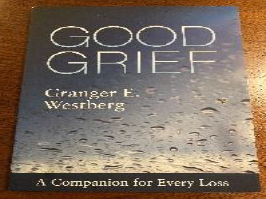The Healthy Spiritual Journey • October 2024
- Lanny F. Wilson, MD

- Oct 1, 2024
- 3 min read
Thoughts about Good Grief
“We come out of [grief] better able to help others. We have walked through the valley of the shadow of grief. We can understand.” – found in Good Grief, by Granger E. Westberg
In this thirtieth year since our daughter Lauren died, we are commemorating thirty years of railroad safety advocacy by the DuPage Railroad Safety Council (DRSC). This amazing, grassroots safety group was begun because a young boy named Jonathan Goers was severely injured and Lauren Wilson was later killed at a railroad crossing in quiet Hinsdale, Illinois. On the stage of life, history has assigned them the role of inspirers. We are clear that this is not a time for celebration, but for commemoration. As the years have gone by, the DRSC has helped to save lives; but this walk through the valley of the shadow of grief does not become good grief. We move on and cope with a grief that becomes more tolerable.
The term “good grief” was popularized by Charles M. Schultz in his cartoon series, Peanuts. Charlie Brown first said “good grief” in a Peanuts comic strip on June 6, 1952. It was an exclamation to express frustration more respectfully than the expressions “good God” or “good Lord”. In March 1961, clergyman and professor Granger Westberg gave quite possibly his most popular sermon at the University of Chicago’s Rockefeller Chapel. The subject of his sermon was grief. People were hungering for guidance on how to deal with grief in a healthy way. The next year, Professor Westberg expanded his sermon into a short, accessible book which he called Good Grief. Millions of copies have been sold. Personally, I have given a copy to several friends and acquaintances who are traversing their own grief journeys. After my fourth reading, I feel that the book is still helpful, especially because of its brevity.
Professor Westberg points out that grief is inevitable and is a natural part of human existence. There are little griefs, like losing a baseball as a child or the first dent in a new car as an adult; but there are also big griefs, like a painful divorce or the death of a loved one. When these griefs invariably arrive, many without warning, the question is, “How will we respond?” In my opinion, one cannot turn a bad grief into a good grief. By definition, grief is the emotional suffering or natural response that we experience as a result of losing someone or something. Grief is painful and bad! However, our coping and our responses can be good with help from family, friends, sometimes professionals, and God.
Those of us who acknowledge each grief experience as unique may be able to help others through a ministry of nonjudgmental presence. Certain myths need to be acknowledged as false, such as that grieving will last a prescriptive amount of time. There is no normal time table. Also, the concept of closure is misunderstood; moving-on is not closure! It simply means we have accepted our loss and we are coping successfully. Grieving people of faith seem to have advantages such as expressions of love from our faith communities and hope for the future on earth and in heaven. There is a powerful peace on earth that comes from the assurance that we will join our loved ones in heaven. That is good!
In God’s Love,
Lanny F. Wilson, M.D.
“But we do not want you to be uninformed, [siblings], about those who have died, so that you may not grieve as others do who have no hope.” – 1 Thessalonians 4:13 in the Christian scripture






コメント